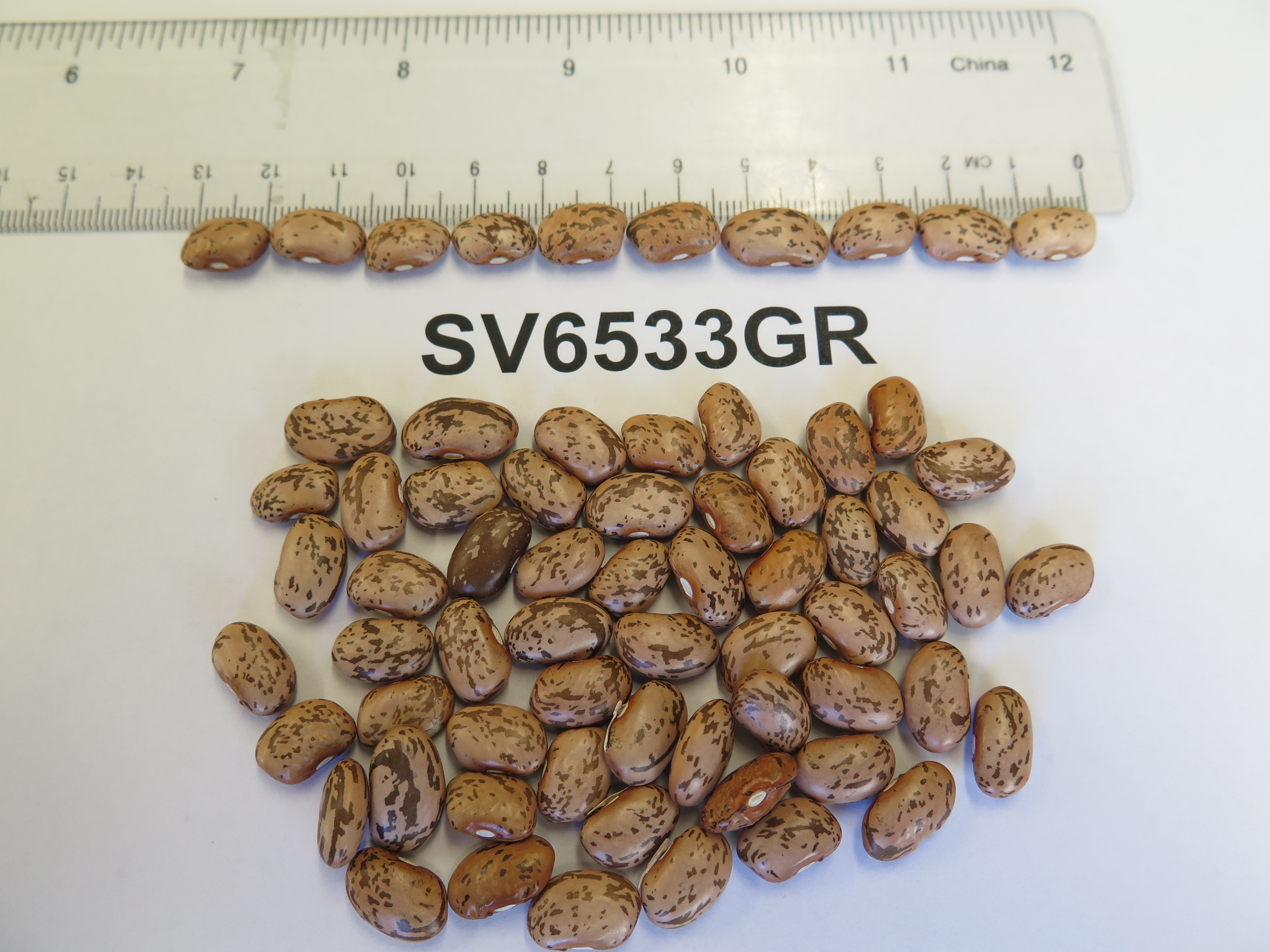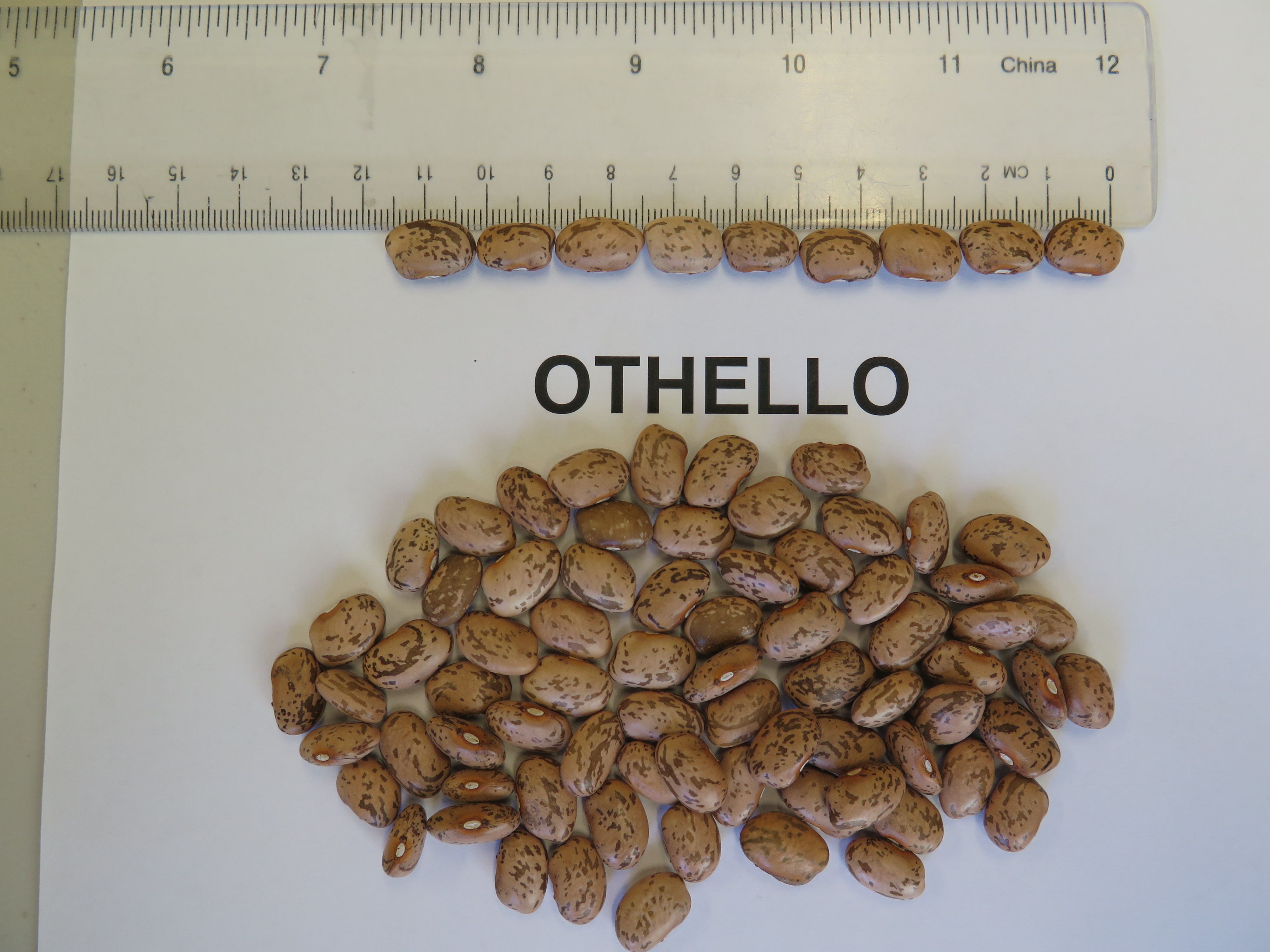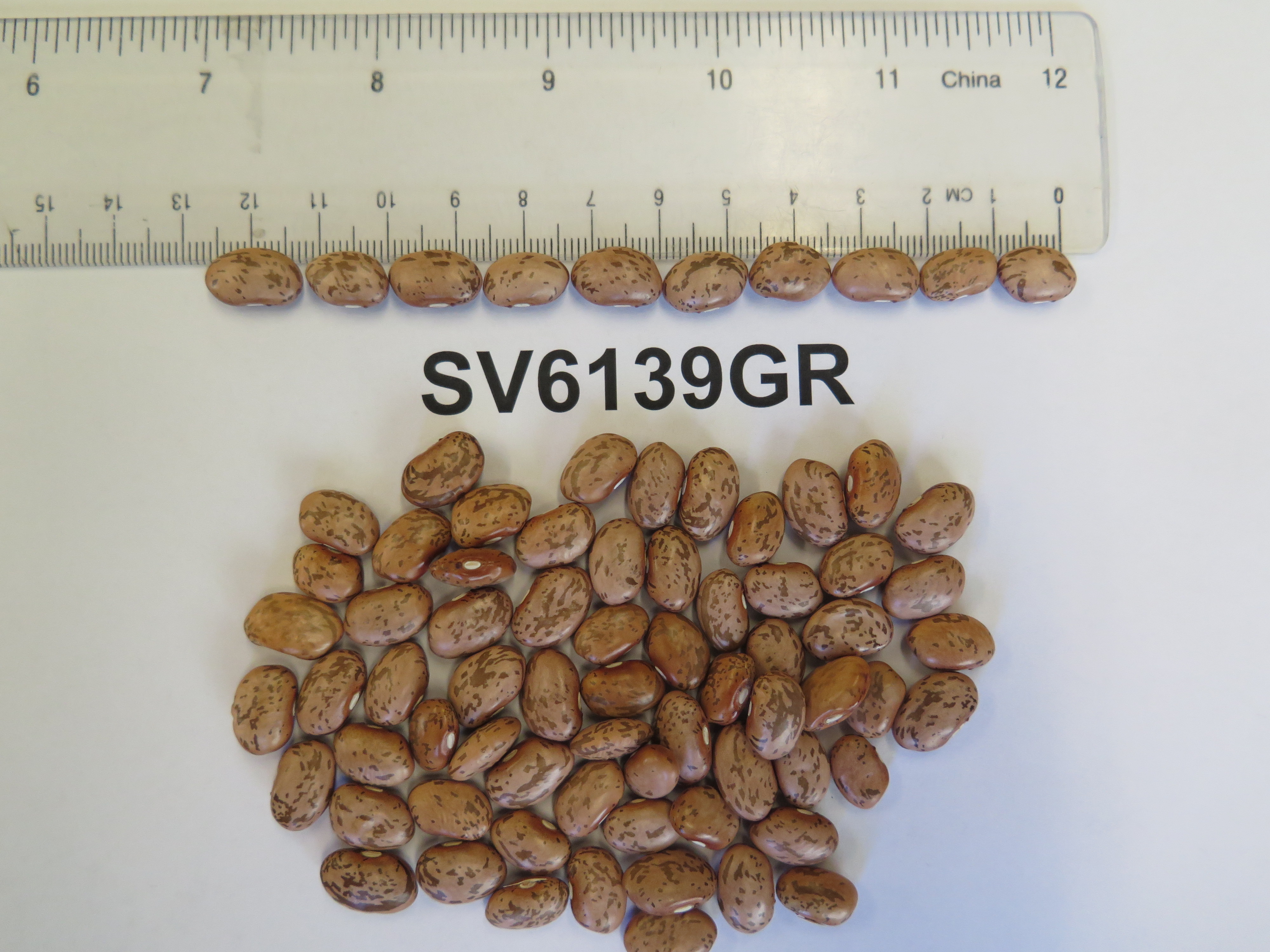SV6533GR
| Denomination: | 'SV6533GR' |
|---|---|
| Botanical Name: | Phaseolus vulgaris |
| Applicant/Holder: |
Seminis Vegetable Seeds, Inc. 800 North Lindbergh Blvd. St. Louis, Missouri 63167 United States of America |
| Breeder: |
Seminis Vegetable Seeds, Inc., St. Louis, United States of America |
| Agent in Canada: |
Bayer CropScience Inc. Suite 810 - 180 Kent Street Ottawa, Ontario K1P0B6 Canada Tel: 613-614-5375 |
| Application Date: | 2015-07-22 |
| Provisional Protection:: | 2015-07-22 |
| Application Number: | 15-8692 |
| Grant of Rights Date: | 2019-02-22 |
| Certificate Number: | 5933 |
| Grant of Rights Termination Date: | 2039-02-22 |
Variety Description
Varieties used for comparison: 'Othello' and 'SV6139GR'
Summary: The guides of 'SV6533GR' are short whereas the guides of 'SV6139GR' are of medium length. The terminal leaflet of 'SV6533GR is of medium size with a long tip whereas the terminal leaflet of 'Othello' is small with a medium length tip. The ground colour of the pod of 'SV6533GR' is green and of weak intensity whereas the ground colour of the pod of 'Othello' is yellow and of medium intensity. The degree of curvature of the pod of 'SV6533GR' is strong whereas the curvature of the pod is medium for 'Othello' and weak for 'SV6139GR'. The degree of curvature of the beak of the pod is medium for 'SV6533GR' whereas the curvature is weak for 'Othello'. In longitudinal section, the shape of the seed is rectangular for 'SV6533GR' whereas the seed of 'Othello' and 'SV6139GR' is elliptic. In cross-section, the seed of 'SV6533GR' is narrow elliptic in shape and narrow whereas the seed of 'Othello' and 'SV6139GR' is medium elliptic in shape and of medium width. The main colour of the seed coat of 'SV6533GR' is beige whereas the seed coat of 'Othello' and 'SV6139GR' is brown. The time of flowering of 'SV6533GR' is mid-season whereas the time of flowering of 'Othello' is early.
Description:
HYPOCOTYL: absent or very weak intensity of anthocyanin colouration
PLANT: dwarf type, determinate growth type, short guides, attitude of branches is semi-erect to intermediate between semi-erect and semi-prostrate
LEAF: dark to very dark green upper side, strong rugosity
TERMINAL LEAFLET: medium size, quadrangular shape, long tip
FLOWERING: begins mid-season
FLOWER: bracts of medium size, white standard, white wing
POD: elliptic shape in cross-section through seed, small ratio of thickness to width, green ground colour of weak intensity, secondary colour distributed sparsely as pink flecks, stringiness of ventral suture present, strong curvature in concave shape, distal part is truncate in shape with beak excluded, medium curvature of beak, moderately rough surface, absent or very weak constrictions at dry stage
SEED: pinto type, medium weight, rectangular shape in longitudinal section, narrow elliptic shape in cross-section, medium length, narrow in cross-section
SEED COAT: beige main colour, brown secondary colour distributed as mottled pattern over entire surface, weak veining
DISEASE RESISTANCE: type 2 resistance to Bean Common Mosaic Virus (BCMV) where resistance to mosaic development is absent and resistance to black root development is present; resistant to Rust race 53
Origin & Breeding History: 'SV6533GR' (experimental designation 'PINC6V1314') is a dry, edible bean in the pinto bean market class, developed by pedigree breeding selection. It originated from a hand pollinated cross conducted in the spring of 2003 between the varieties 'Medicine Hat' and 'Windbreaker'. The breeding work was conducted under the direction of Kenneth Kmiecik and David Webster at the Seminis Vegetable Seed, Inc. breeding stations located in Filer, Idaho, and De Forest, Wisconsin, USA. From 2004 to 2005, plant type and visual yield were used as selection criteria for selecting from the F2 to F5 generations. During the summer of 2006, plant type, visual yield, resistance to Rust race 53, Fusarium Wilt, and to Bean Common Mosaic Virus (BCMV) were used as selection criteria for selecting from the F6 generation. From 2007 to 2008, the F6 generation was further evaluated for yield and plant type. During the summer of 2009, the F6 generation was subjected to open field trials in Filer, Idaho; De Forest, Wisconsin; Grand Marsh, Wisconsin; and Red River Valley, North Dakota and Manitoba to assess yield and adaptation. During the summer of 2010, a foundation seed crop was planted in an open field trial in Filer, Idaho, to assess yield. 200 single plants were harvested, bulked and subjected to yield and adaptation trials in Filer, Idaho; De Forest, Wisconsin; Grand Marsh, Wisconsin; and Red River Valley, North Dakota and Manitoba. During the summer of 2011, foundation seed was planted as progeny rows in an open field in Filer, Idaho, and inspected for off-types and uniformity. Any suspect rows were removed. Seed from these progeny rows was then bulked and given the commercial name 'SV6533GR'.
Tests & Trials: The comparative trials for 'SV6533GR' were conducted during 2016 and 2017 at the University of Guelph, Ridgetown Campus in Ridgetown, Ontario. A four replicate, randomised complete block design was planted with each replicate consisting of one row per variety. Each row was 3 metres long and spacing between rows was 0.75 metres. The plants were spaced 0.075 metres within the rows. The number of plants per variety was 80 X 4 replicates.
Click on image for larger view

Bean: 'SV6533GR'
Click on image for larger view

Bean: Reference variety 'Othello'
Click on image for larger view

Bean: Reference variety 'SV6139GR'
- Date modified: